The number of patients suffering from osteochondrosis increases each year, and the disease cannot be emphasized - a few decades ago the problem is mostly the elderly, but now it often makes itself felt even for those who do not have 30 most common forms are maximum and maximum osteochondrosis.disk.In addition to persistent pain that disrupts normal life, osteochondrosis without timely medical treatment is full of serious complications, which means that it is very important to recognize the first signs in time and start the fight against it.
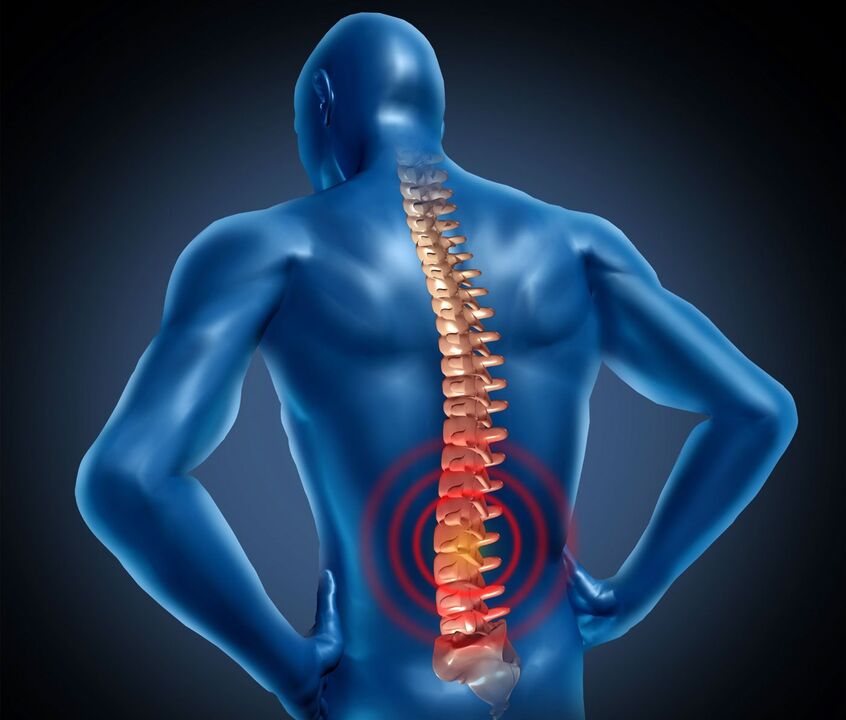
From which osteochondrosis comes from
The question is far from easy, as there are many factors that can cause this disease.It can be a feature of body physiology, and unhealthy lifestyle, a genetically placed diet or program.In general, one of the main reasons for the development of osteochondrosis of the lumbar region, one can distinguish:
- Improper distribution of load on the spine (wrong posture, poor mattress -quality or office chairs, etc.);
- SEDENTARI LIFE;
- frequent stress;
- unhealthy habits;
- A small diet, leading to the deficiency of the vitamins needed and the trace element;
- hypothermia;
- pathology of the structure of the musculoskeletal system, for example, spinal curvature, flat feet, and others;
- overweight;
- violation of metabolism;
- spinal injury;
- transferred to infectious diseases;
- The process of chronic inflammation, mainly associated with joint disease;
- Genetic predisposition.
Risk groups also include people whose professional activities are associated with significant loads, for example, athletes, and those who should be at the same time for a long time: teachers, office workers, drivers, servers, hairdressers, etc.
In addition, osteochondrosis is often the result of other diseases, for example, liver or gastrointestinal disorders (about 30% of patients), heart, and ovarian inflammation in women and prostatitis in men.In this case, existing pathologies cause muscle and vascular cramps, causing oxygen starvation and dystrophic changes.Thus, the fabric that forms the vertebral and intervertebral discs, which suffer from nutritional deficiencies, are gradually destroyed - the lumbar area osteochondrosis develops.
Symptoms of disease
About what signs can be recognized in an osteochondrosis of a lumbar spine, and is it realistic to do this until the disease has momentum?Unfortunately, in the early stages, the disease in many cases continues almost without symptoms, and the slightest discomfort behind time to time is most often eliminated to normal fatigue.This is the main danger - while osteochondrosis can still overcome without consequences, it is difficult to detect, and when problems become clear, it is more difficult to slow down the pathological process.
The most important sign of this pathology is severe back pain, often spreading throughout the back, buttocks and feet.In the first stage, it is mostly painful or attractive, and occurs only after physical or moving effort.Over time, the period of relative loss, when the patient does not feel pain and discomfort, becomes shorter, and gradually the unpleasant sensation in the lower back turns into his permanent companion.In addition, there is a problem, when the pain becomes intense and sharp, and even the most important burden can cause attacks, so coughing or sneezing.
There are additional signs of lumbar osteochondrosis:
- movement stiffness;
- decreased sensitivity and tingling in the feet;
- Sweat violations;
- muscle weakness;
- Dry and peel off the skin.
In the last stage, the patient may have difficulty with urinary tract control and drainage due to pinching of spinal cord, and male patients experience erectile dysfunction.
Degrees of lumbar osteochondrosis
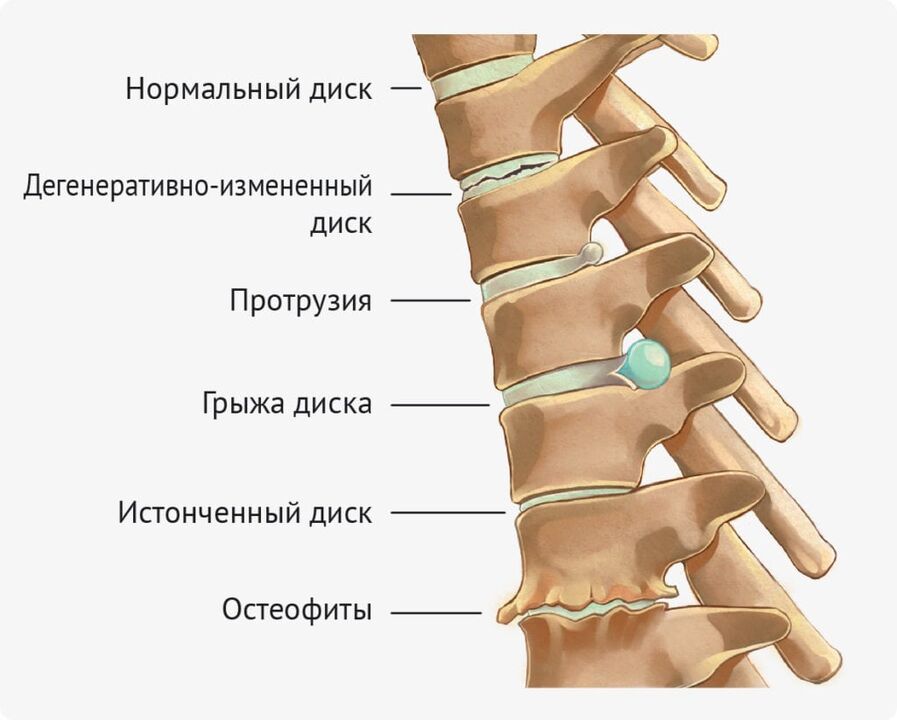
In total, the 4 main stages of the development of the disease are distinguished.For 1, weak intervertebral disc deformation is expressed - this is a small fracture in the fibrous ring, which causes unpleasant sensations.1st degree osteochondrosis is characterized by paroxysmal pain, which only occurs with sharp movements and weight lifting.We talk about Lumbago, that is, the bastard in the lower back in response to an attempt to change the uncomfortable body position.In addition, at stage 1 of the disease, patients often experience muscle cramps and swelling.
Lumbar osteochondrosis of the 2nd degree starts with lumbargia - pain and discomfort increased and appear regularly, and to improve well -being, it is enough to just lie down and rest.The process of destruction of fibrous rings continues, and the vertebra itself acquires unhealthy mobility - the distance between them decreases, and the nerve endings are pinched.As a result, patients have severe pain, as well as alternative and cold alternative sensations, increased sweating and skin numbness.
Stage 3 osteochondrosis is the period of intervertebral hernia formation.Fibrous rings and nucleus content, pushing vessels and nerve roots, falling.At the same time, the patient was tortured by acute pain that was chasing him almost without rest.Periodically, in the affected area, sensitivity decreases or completely disappears, and in other cases, on the contrary, it can increase with pain and accompanied by a tingling and burning sensation.At this level of osteochondrosis, although not a specialist can see the spinal deformation - the patient develops the curvature of the spinal column according to the type of lordosis, kyphosis or scoliosis.
The 4th stage of the disease is the worst -the spine is very defective, the patient suffers from persistent pain, and any movement for them to be a real problem.This is due to the destruction of the nearly complete intervertebral disc, as a result the maximal vertebrae accumulates or even contact with each other.In this case, the spinal cord can result in lower leg paralysis.If you do not start treatment on time, by going to the 4th stage, osteochondrosis can make a person with disabilities for the rest of his life.
Diagnosis of osteochondrosis
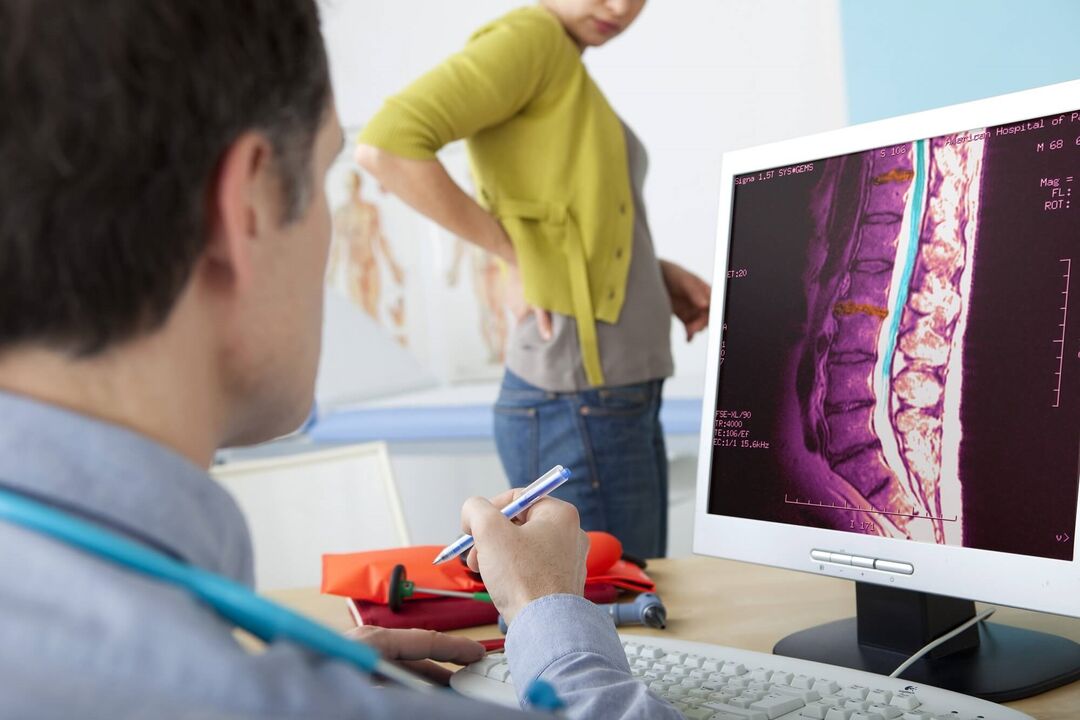
With lower back pain, most patients first seek advice to the therapist, who, if there are appropriate symptoms, send it for further examination of a neurologist.He, in turn, conducts examination, collects anamnesis and prescribes hardware studies to make an accurate diagnosis and determine the degree of neglect of the disease.
During the accumulation of anamnesis, the main task of the specialist is to know the unpleasant sensation, their localization, intensity and duration, and also understand the frequency of the disease, which, as a rule, precedes, and steps that bring help to the patient.Also, to make diagnosis, patient lifestyle, regular diet, features of professional activities, injuries and existing diseases, including heredity, are important.
This examination allows you to assess the ability of the patient's motor (posture, gait, the amount of movement), the presence of muscle tone and cramps, and determine the level of sensitivity in the affected area.
However, you can get a full picture with the help of hardware research: radiography, CT and MRI.X -Ray allows you to see a violation of the spinal structure, assessing the state of the intervertebral disc and in time to recognize the tendency to reduce the lumen between the vertebrae.Tomography calculated in this case is more informative - it makes it possible to look literally in the spine and study existing pathology.And MRI, in turn, provides complete information about the state of the spinal cord, nerve endings, muscles and blood vessels, which is very important not only to make a diagnosis of "lumbar osteochondrosis", but also to determine the degree of neglect of the disease.
Method of treatment
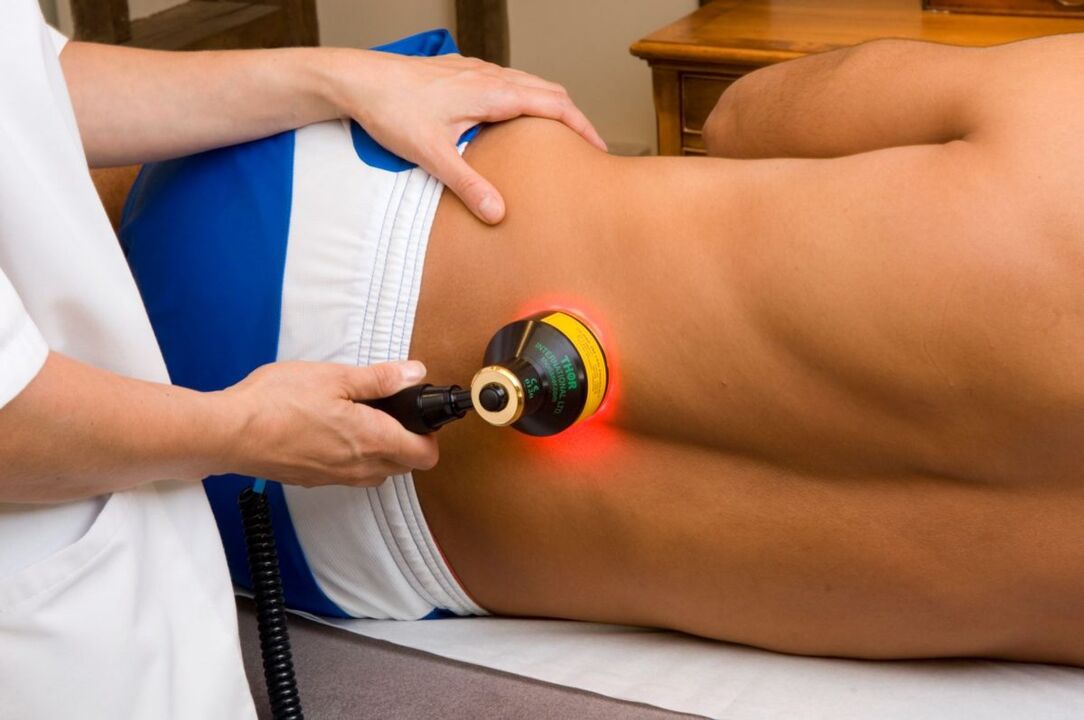
To successfully overcome lumbar osteochondrosis, patients need complex therapy, including drug treatment, physiotherapy procedures, special gymnastics, massage, and the use of traditional medicine recipes that enhance the effects of traditional methods.
The priority task that needs to be completed by starting the treatment of lumbar osteochondrosis is the release of pain syndrome, as during the hunting of many therapeutic methods, such as physiotherapy and exercise therapy cannot be used.For this purpose, the patient is prescribed painkillers and injections, as well as non -ssteroid anti -inflammation.It is a major component of the treatment of osteochondrosis -they not only overcome the symptoms, but also affect the causes of their appearance.In the hardest case, glucocorticosteroids are used to combat the inflammatory process, which is most often introduced into the inner tissue in the joint damage zone -as novocaine or lidocaine.
In addition, patients with osteochondrosis need preparations to eliminate muscle cramps - anticonvulsan and muscle relaxants, chondroprotectors that restore damaged cartilagin tissue, and vitamin B that strengthen body protection function and reduce inflammation.
After pain painting, physiotherapy procedures come to the forefront of the treatment of osteochondrosis.We are talking about the use of laser therapy, magnetotherapy, ultrasound, electrophoresis, acupuncture, mud baths, paraffin applications, etc., which effectively overcome discomfort and pain and improves the results from taking medicines.
An important place in the fight against osteochondrosis in the lumbar region is diverted with physiotherapy training - subject to normal implementation, a set of training designed specifically for such cases significantly improves the patient's condition, restoring the freedom of moving almost completely.And professional massage will help bring perfect success to muscle cramps.Non -traditional medicine, which offers osteochondrosis, plays a non -last role in this regard, not only effective in combating the disease, but also safer than many synthetic drugs.
Why is lumbar lumbar osteochondrosis?
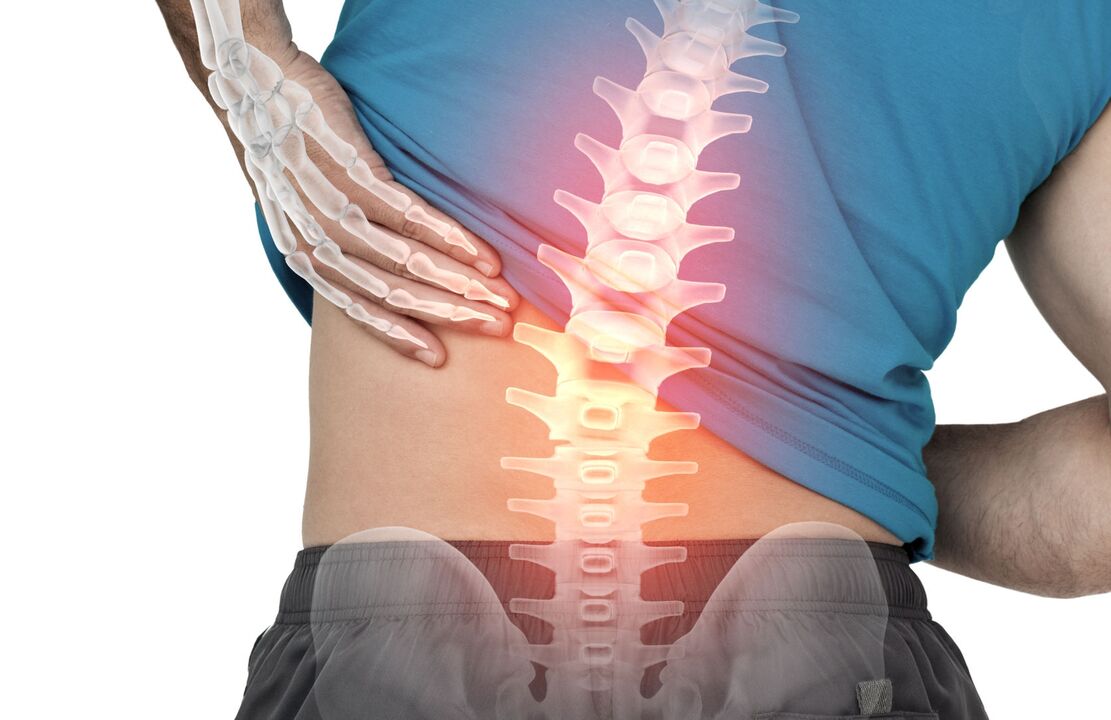
In addition to intensive pain, which often makes the life of patients with true lumbar osteochondrosis -is unbearable, people with such diagnosis are limited by motor capacity, and in the last stage of the disease, some of them can be completely lost.We talk about lower leg paralysis, which can develop due to spinal cord compression.In the most extreme cases, osteochondrosis can cause death if there is significant damage to the spinal cord shell.
But without reaching 4 stages, lumbar osteochondrosis seriously weakens human health.Often it ends with the formation of intervertebral hernia, which requires prolonged and complex treatment, and in some cases, and surgical intervention.In addition, reducing blood vessels, which are characteristic of osteochondrosis, can cause harmful stagnation and violate other internal organs.In patients with such a diagnosis, the genitouriner system often suffers - lumbar osteochondrosis can cause problems with ovaries, uterus and complement in women and erectile dysfunction in men.
It is clear that in time to recognize the symptoms of osteochondrosis, seek help and start its complex treatment - the task is very important.But the role of prevention is not less important in this regard - with its help you can reduce the risk of developing the disease and maintaining good health.We talk about normal, but simple physical efforts, a healthy lifestyle, a balanced diet, compliance with the drinking regime and expert examinations that can identify possible problems in the early stages.
Keep in mind that osteochondrosis in the lumbar region is a serious disease, which is very dangerous for health to ignore which symptoms.Only by recognizing the disease in time and starting treatment, you can slow down the pathological process and restore the patient to lead the opportunity to lead the normal lifestyle.Otherwise, the consequences may be the saddest, until the defect, which the patient can no longer get rid of.

























